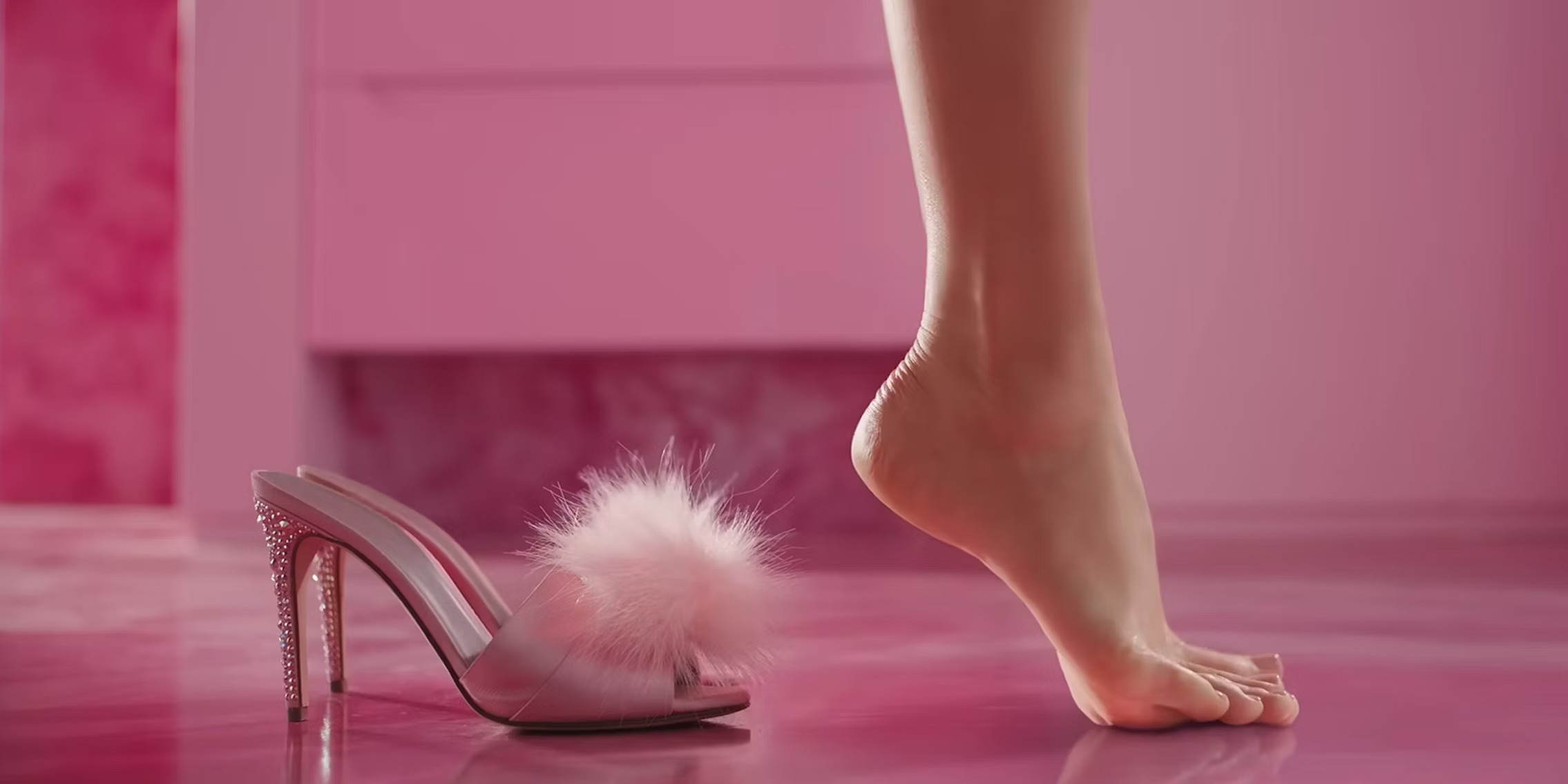Table of Contents Show
It is no secret that Greta Gerwig‘s new Barbie (2023) has captured the attention of the public. (( Gerwig, Greta, director. Barbie. Warner Bros, 2023. )) Starring Margot Robbie and Ryan Gosling, and with a budget of an estimated $100 million (( Murray, Conor. “Why ‘Barbie’ Is Going Viral: What To Know About Margot Robbie And Ryan Gosling’s Upcoming Movie.” Forbes, 5 April 2023. Accessed 23 June 2023. )), the film has created a significant buzz in the media.
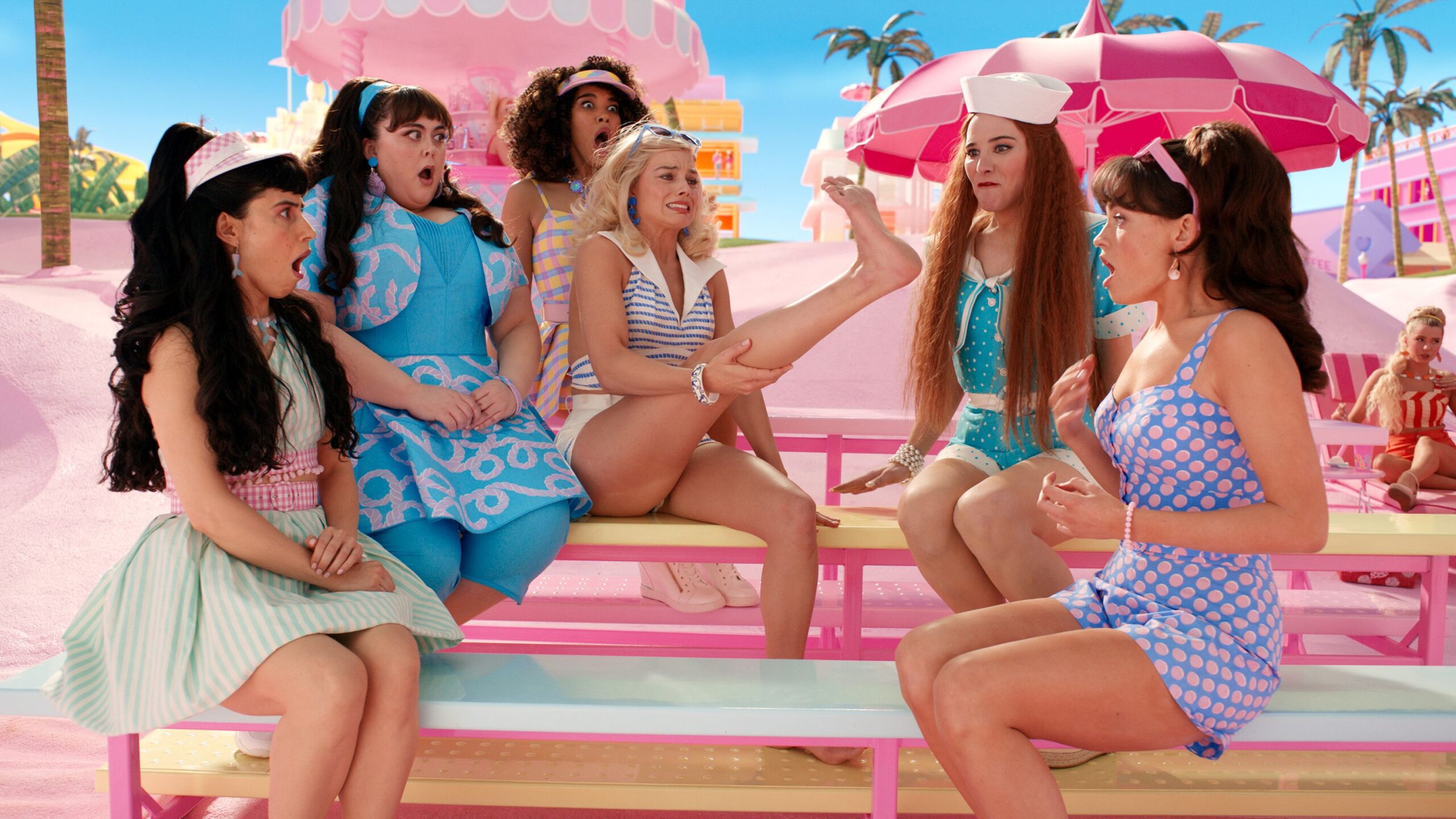
But how did a toy franchise that started over sixty years ago manage to inspire a possible Blockbuster hit in 2023; let us dive into the history of Barbara Millicent Roberts’ ever-expanding empire to find out!
The 50’s: Barbie Is Born (1959)
Barbie was created in 1959 by Ruth Handler. Ruth and her husband Elliot Handler had co-founded the toy company Mattel back in 1945, and Ruth was unhappy seeing that her daughter, Barbara, only had baby dolls to play with. (( Bellis, Mary. “Biography of Ruth Handler, Inventor of Barbie Dolls.” ThoughtCo, 28 January 2020. Accessed 23 June 2023. )) While playing with baby dolls, young girls were only able to imagine themselves as mothers in the future.
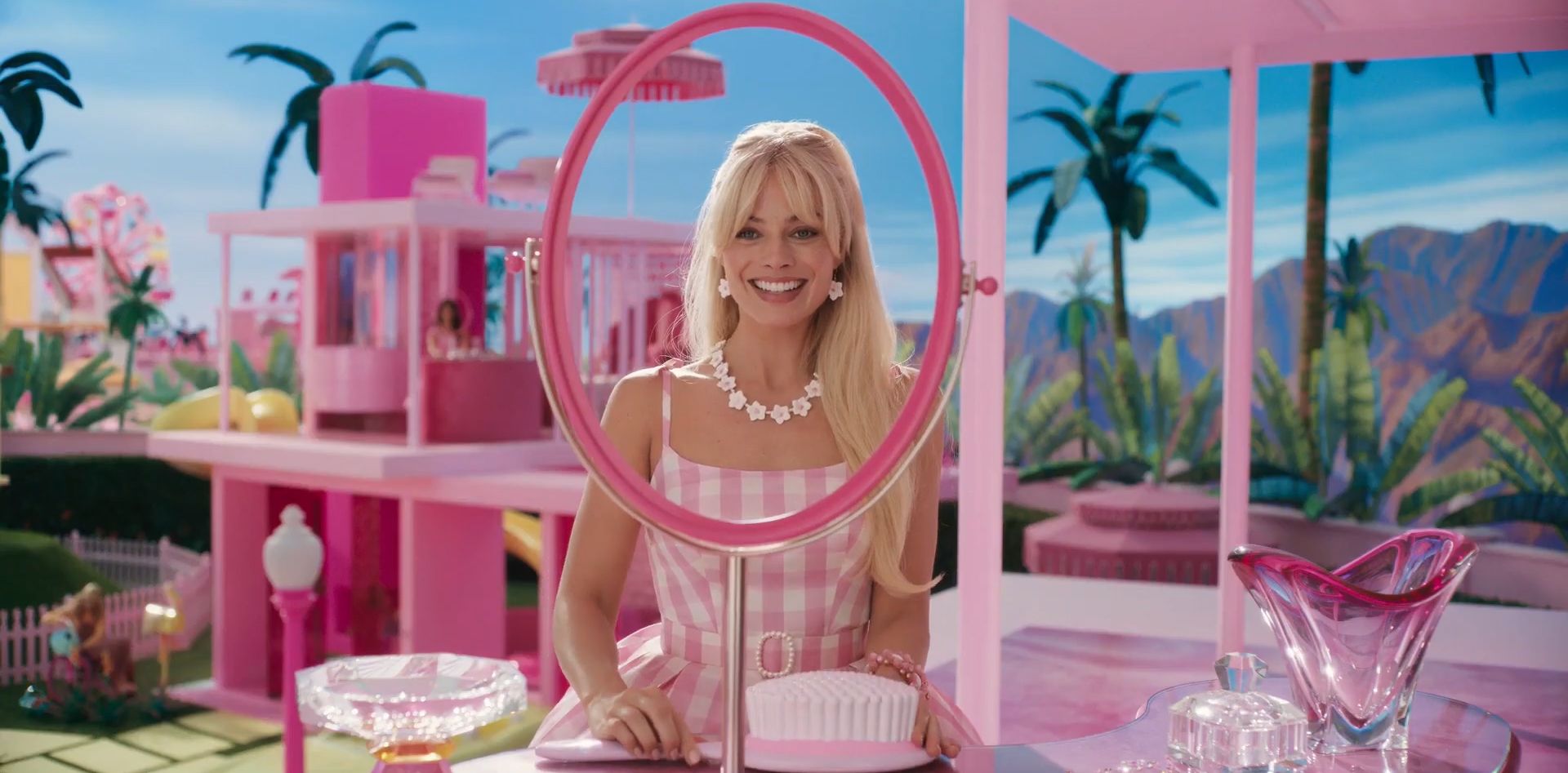
Handler wanted to create a toy that young girls could play with and imagine themselves not just as mothers, but as women who were allowed to have identities separate from their marital or maternal status. Mattel first debuted the Barbie doll on March 9, 1959, at the American Toy Fair and met with a strong reception from the public. Barbie came with her original iconic black and white swimsuit, white sunglasses, gold hoops, and either a blonde or black ponytail.
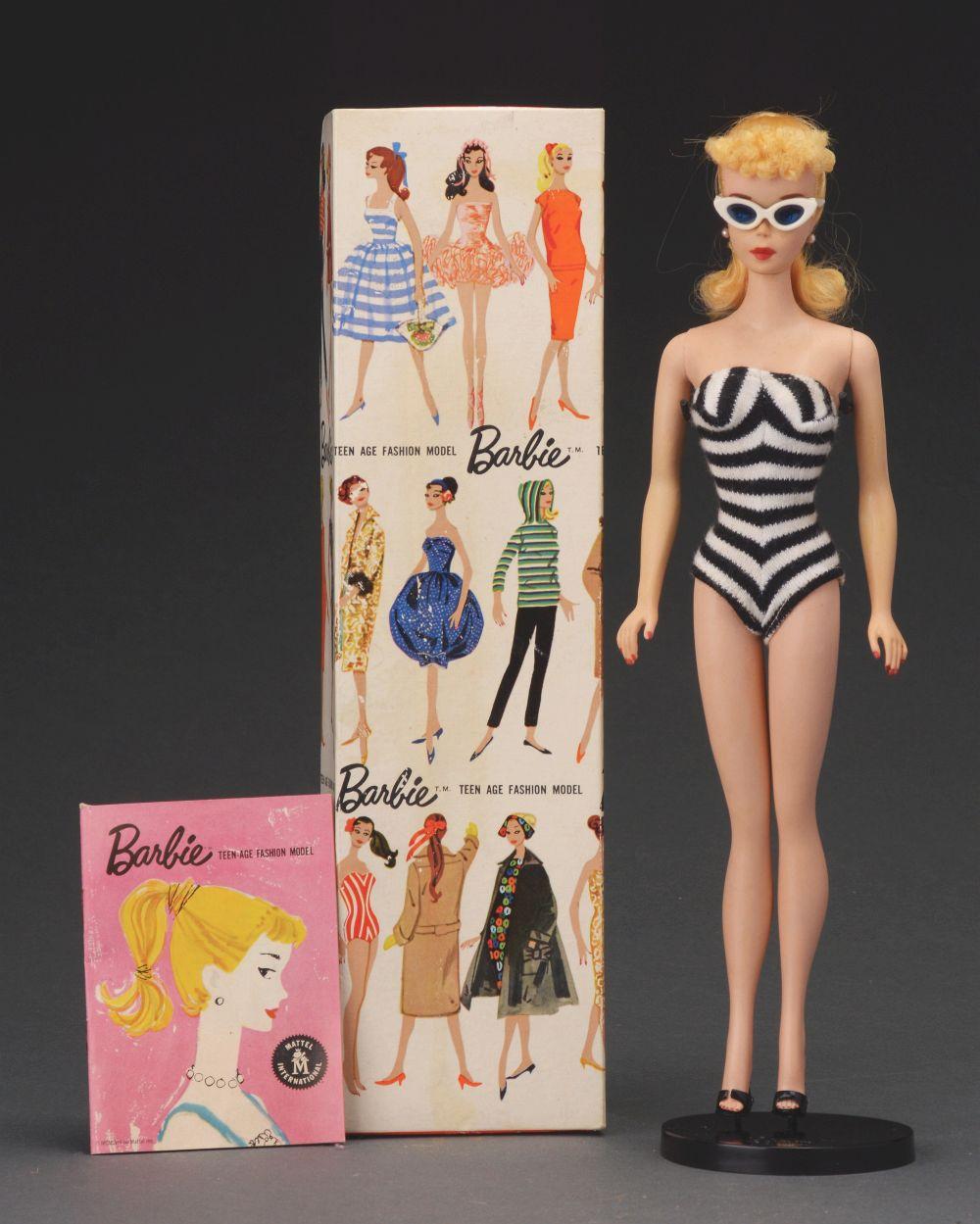
You could also purchase other Barbie outfits separately since she was marketed as a “fashion doll.” (( Holland, Brynn. “Barbie Through the Ages.” History, 8 March 2019. Accessed 23 June 2023. ))
The 60’s: Barbie’s Boyfriend “Ken” (1961)
In 1961 Mattel released a new doll, Kenneth Carson, or just “Ken” for short. Ken was created to be Barbie’s boyfriend and was named after the Handler’s other child. Ken also came with a swimsuit, as well as both blonde and black-haired versions. (( “Ken Timeline.” Barbie Media, 2022. Accessed 23 June 2023. ))


While nowhere near as successful as Barbie, Ken still generated plenty of sales, mainly due to Barbie’s popularity as a franchise in general. As the poster for the Barbie (2023) movie reads: “She’s everything. He’s just Ken.” (( “Barbie.” IMDb, 2023. Accessed 23 June 2023. )) The director of Barbie, Greta Gerwig even adeptly pointed out in a recent interview:
“Ken was invented after Barbie, to burnish Barbie’s position in our eyes and in the world. That kind of creation myth is the opposite of the creation myth in Genesis.”
(( Aguirre, Abby. “Barbiemania! Margot Robbie Opens Up About the Movie Everyone’s Waiting For.” Vogue, 24 May 2023. Accessed 23 June 2023. ))
The Ken doll was just another addition to Barbie’s empire, like any of her other accessories or outfits.
The 60’s: Barbie Paves The Way (1962-1965)
Throughout the 60s, Barbie continued to achieve things, some of them before women in America at large were typically able to. In 1962, Barbie got her first car, an Austin Healy Roadstar. (( Hunting, Benjamin. “50 Years of Barbie’s Rides.” Autobytel, 2023. Accessed 23 June 2023. )) At the time, only a little over half of women in America had their licenses, since most women married young and were often driven by their husbands.
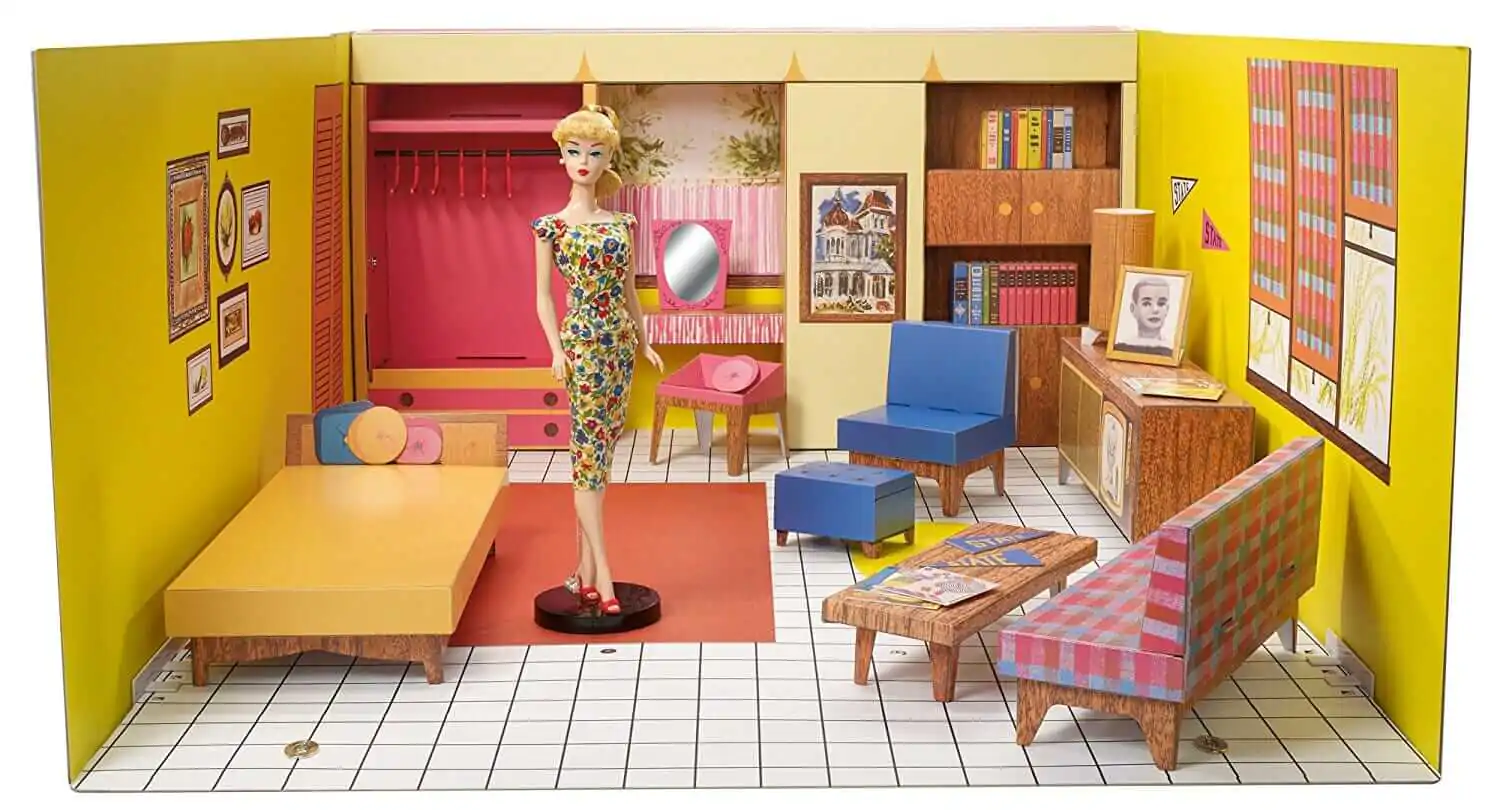
In the same year, Barbie also bought her first home. This was before women were even allowed to open their own bank accounts, so Barbie having her own home was extremely progressive for the company. (( “Timeline.” Barbie Media, 2022. Accessed 23 June 2023. )) In 1963, Barbie became the executive of a company. Barbie as a brand was known for releasing the “career” Barbies, which had different outfits for different careers.
This was intended to show young girls that they could do anything. Before 1963, Barbie had had many careers, including Fashion Designer, Ballerina, Nurse, and Flight Attendant, but they were all female-dominated careers. (( Glusac, Melina. “Barbie turns 60 this year. Here are 25 of the coolest jobs she’s had.” Insider, 9 March 2019. Accessed 23 June 2023. ))
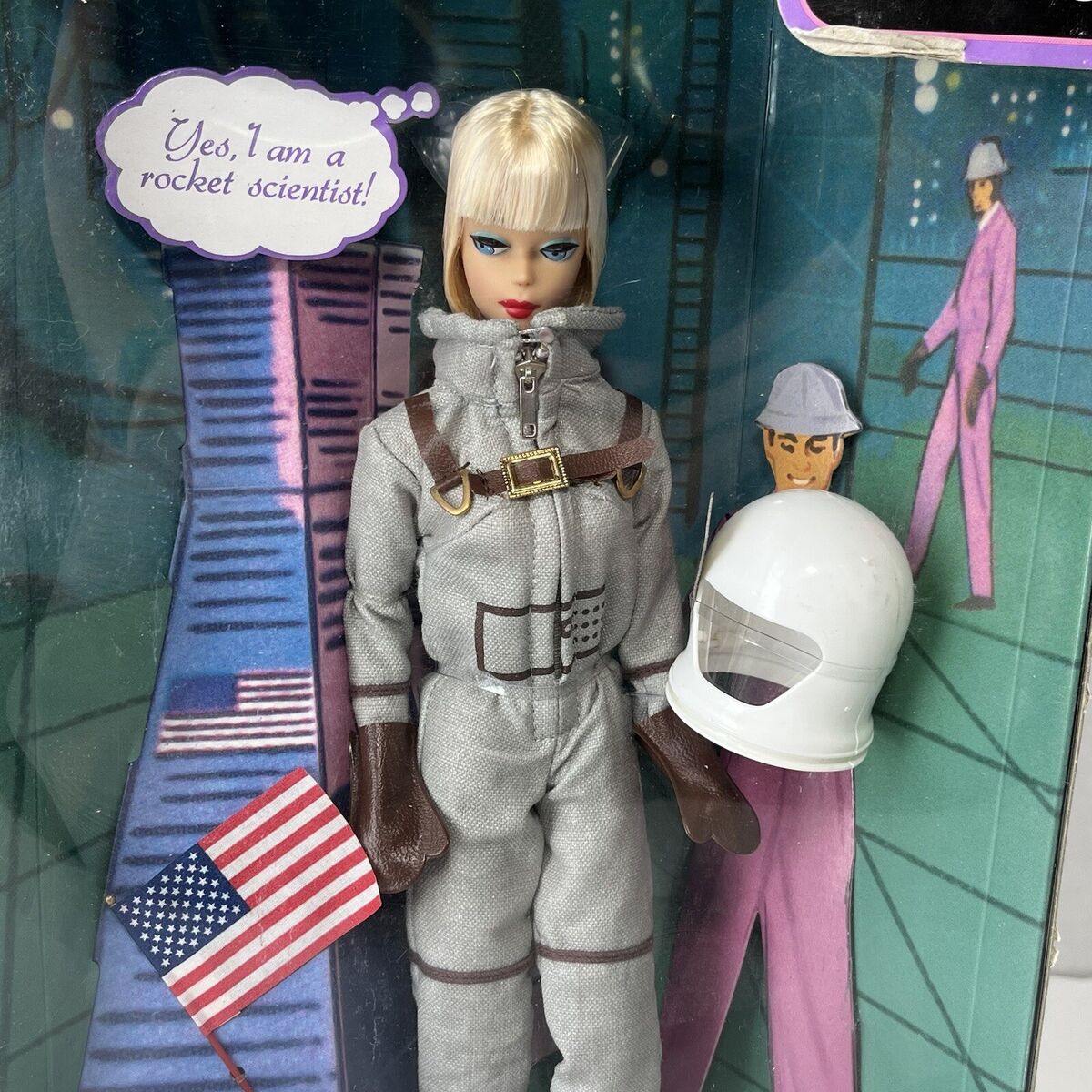
The release of the Career Girl Barbie was a large step for the brand that proved just how much they believed in women and young girls, at a time when it was extremely rare for women to succeed in male-dominated fields, much less at an executive level. In 1965, Barbie went to the moon (( “Timeline.” Barbie Media, 2022. Accessed 23 June 2023. )), before even any man ever had, and long before women were astronauts at all.
Barbie continued to pave the way, showing young girls that played with her that your identity as a woman didn’t have to just be a mother or a wife — you could dream of owning homes, having jobs, and going to the moon, all without a man.
The Late 60’s: Barbie & Christie (1968)
While Barbie was proactive about furthering its message of female empowerment for the most part, the same cannot be said for the brand’s diversity. In 1968, nine years after Barbie’s birth, Christie was born.
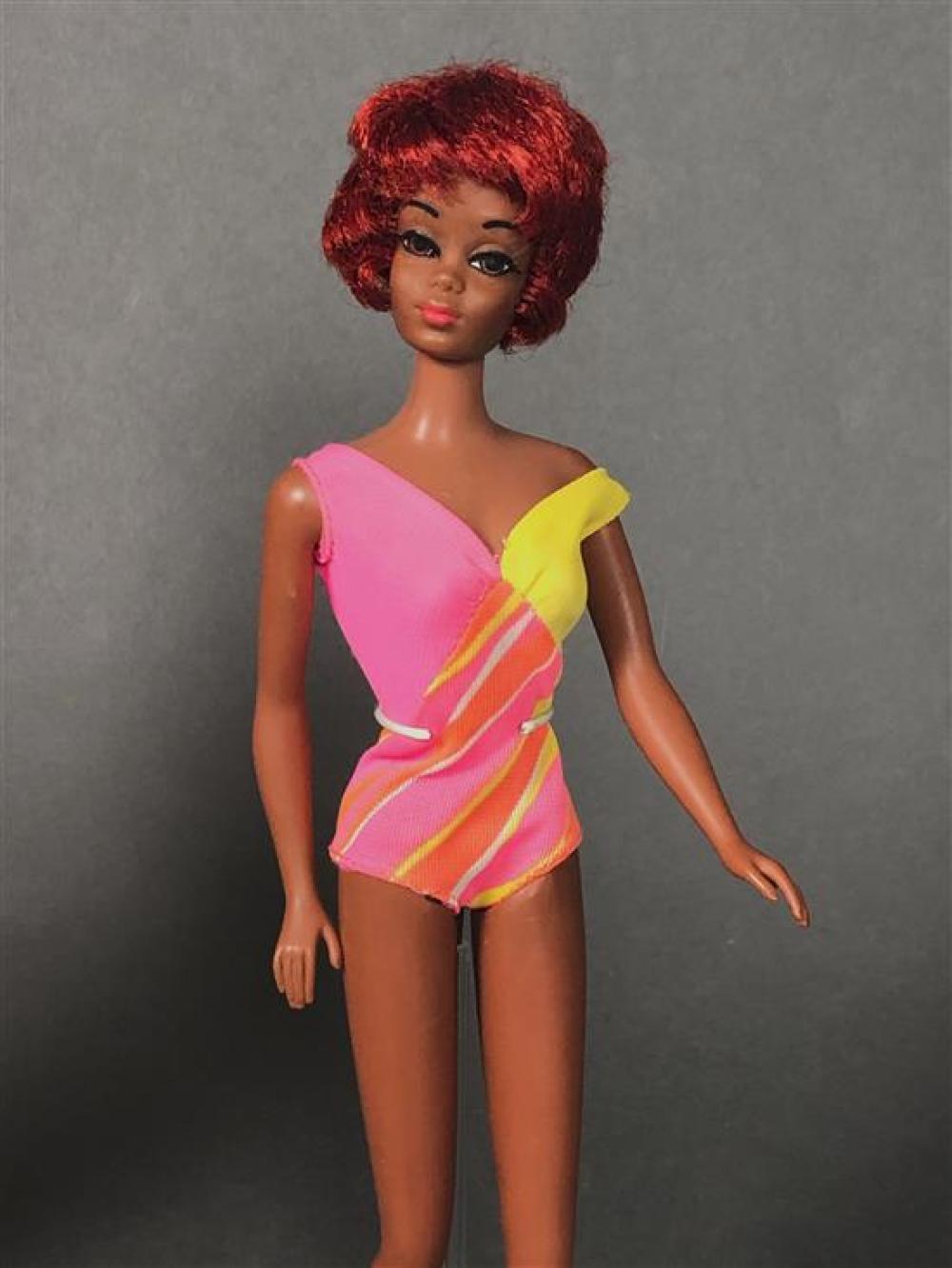
Christie was set to be Barbie’s friend and the first Black Barbie doll. There were multiple issues with the Christie doll, beginning with the fact that Christie was essentially just Barbie dyed to have a different skin tone; she had the same exact hair as the White Barbies. (( Jackson, Olivia. “The Evolution of Barbie.” Woman Magazine, 11 May 2023. Accessed 23 June 2023. ))
Young Black girls wanted to have the option of playing with Barbies that looked like them — and Christie didn’t give them that. Releasing Christie as a separate entity — especially when it was clear that there were tons of different universes in which Barbie had different careers and life paths — made the idea of Barbie herself something only White girls could achieve.
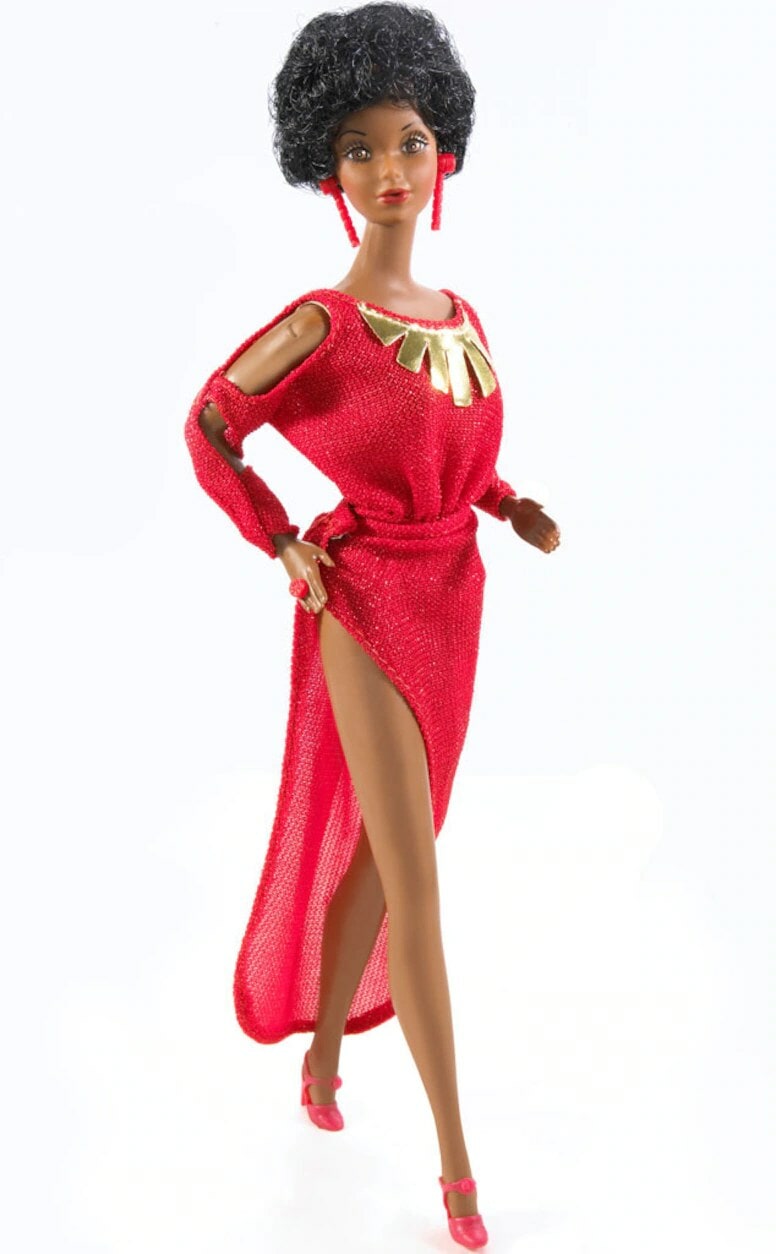
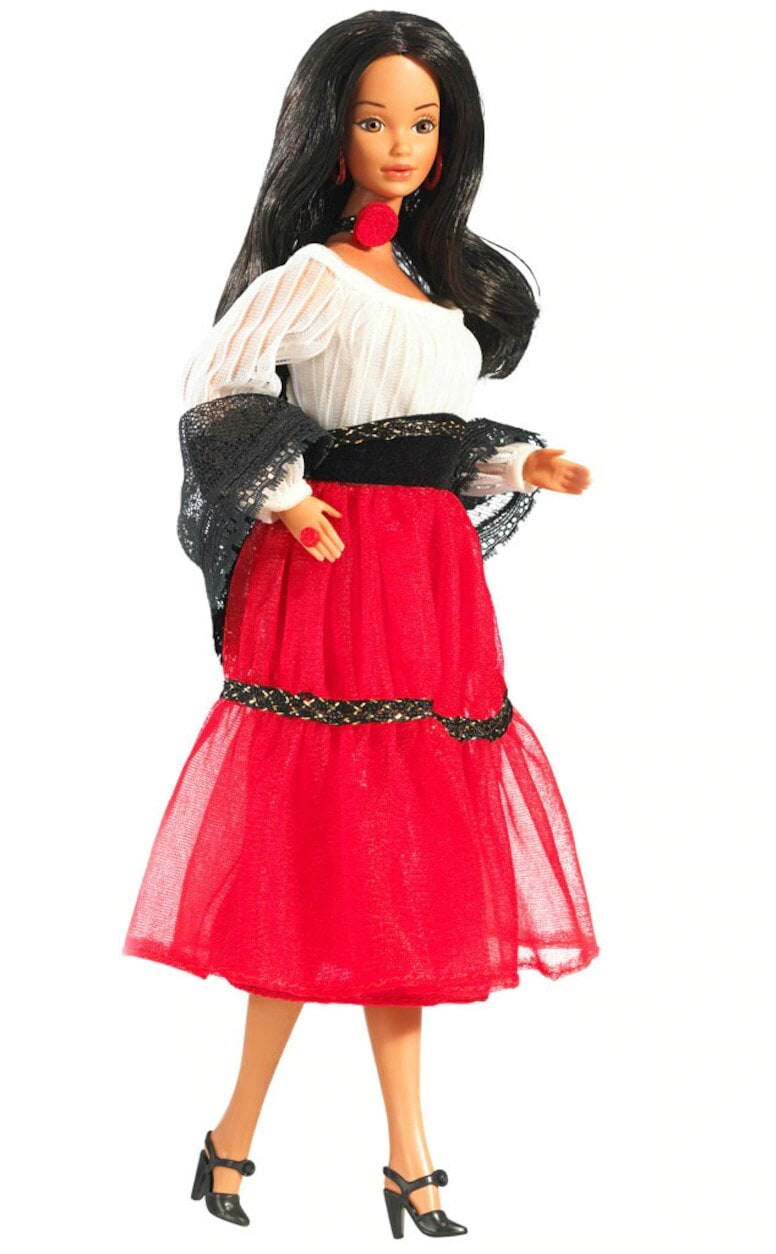
Mattel corrected the Christie misstep in 1980 by releasing Barbies of different races that were also named Barbie. Both a Hispanic and a Black Barbie were released, each with unique hair textures and facial features. (( “Timeline.” Barbie Media, 2022. Accessed 23 June 2023. ))
Later that year, Mattel even began its “Barbie Dolls of the World” collection, which would feature Barbie dolls of different ethnicities from all over the world. While they began with only English, Parisian, and Italian Barbies, they eventually added over ninety dolls that were not just from predominately White countries. (( “Dolls of the World.” Barbie Wiki, 2023. Accessed 23 June 2023. ))
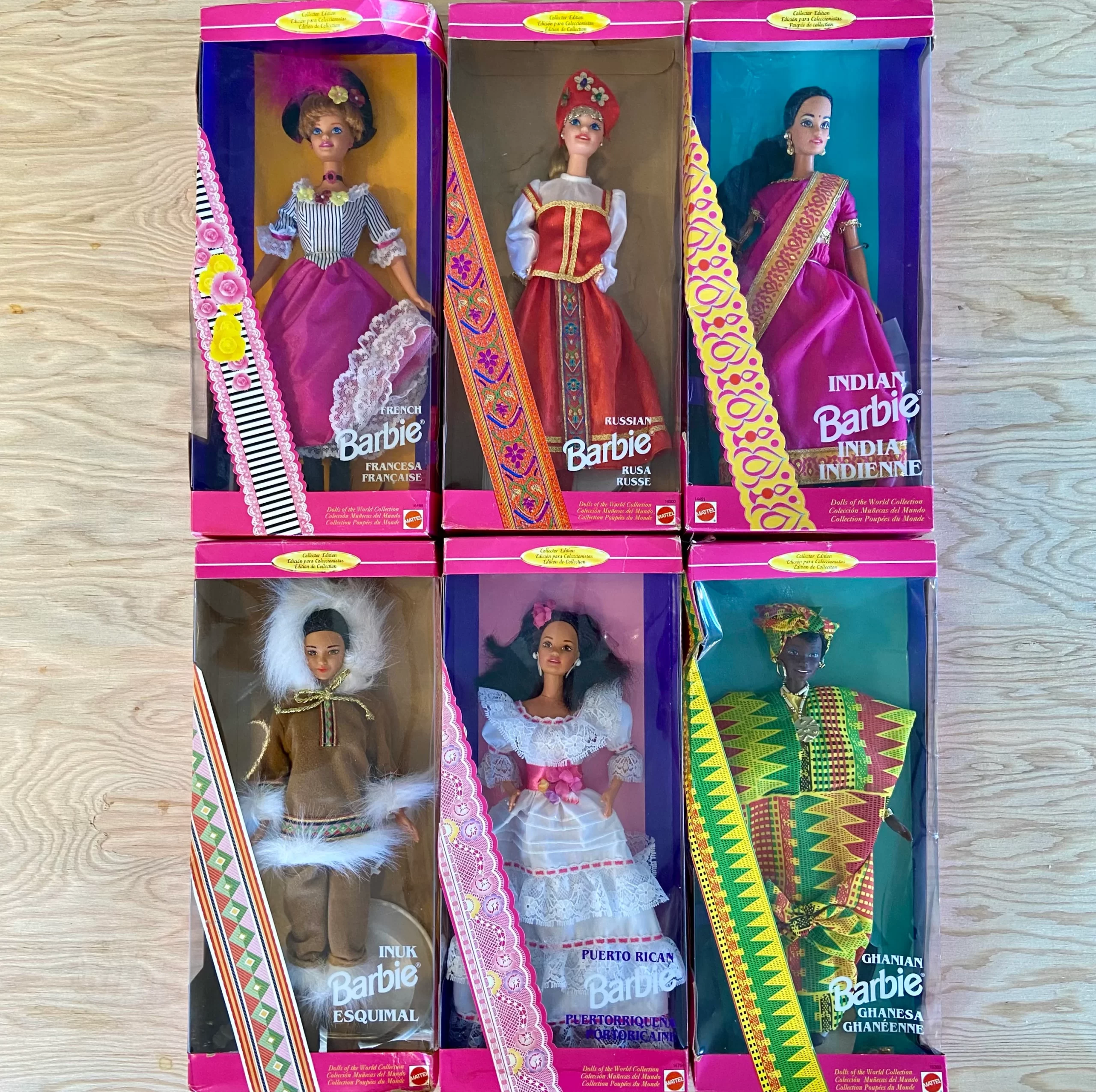
Though Barbie wasn’t diverse initially, Mattel corrected it, and continued to correct it into the future. Eventually, Barbie would come in many different races, skin tones, heights, body types, abilities, and genders. (( “Barbie Diversity Evolution.” Mattel, 2019. Accessed 23 June 2023. )) Barbie as a franchise might have made mistakes, but it always seemed to come out ahead of other major toy companies, which is one of the ways it managed to maintain its relevancy for so many years.
The 90’s: Barbie Booms
The 90s was a huge decade for Barbie and Mattel. Many iconic Barbies were released during this time, including the first Barbie that ran for President (which she would continue to do for every election year after 1992) (( Halzack, Sarah. “How President Barbie has changed over the years.” Washington Post, 12 July 2016. Accessed 23 June 2023. )), the first Barbie to join the Army and, the best-selling Barbie of all time, the Totally Hair Barbie.
The Totally Hair Barbie exploded Barbie’s already immense popularity, selling more than ten million dolls. (( “Best-selling Barbie doll.” Guinness World Records, 2023. Accessed 23 June 2023. )) This Barbie had hair that reached down to her feet and came with hair gel, a hair pick, and hair accessories to braid and clip her hair up.
The success of the Totally Hair Barbie enabled Mattel to almost double their Barbie sales. During the back half of the 90s, they had a vast array of different successful collections. Dolls of the World, City Seasons, Bridal, Vintage Retro, University; not to mention all of the anniversary Barbies, all the celebrity Barbies, and all of the brand collaborations Barbie did with everyone from movie studios to Coca-Cola or NASCAR. (( “1990’s.” Barbie Collectors Guide. Accessed 23 June 2023. )) This significantly contributed to Mattel’s profits, giving them cash to pour into their expanded endeavors in the 2000s.
The 00’s: Barbie Media With The Bratz (2001) Inception
Though Barbie was extremely popular, Mattel was also facing a big threat: the emergence of Bratz dolls. The Bratz company was created by an ex-Barbie employee, Carter Bryant (( Hazlehurst, Beatrice. “A Brief Investigation Into the Complicated History of Bratz.” W Magazine, 1 June 2021. Accessed 23 June 2023. )), so it’s understandable that Bratz was considered a danger to Mattel from the beginning of the brand. Bratz were younger, sassier, quintessentially 2000, and extremely trendy at the time of release.
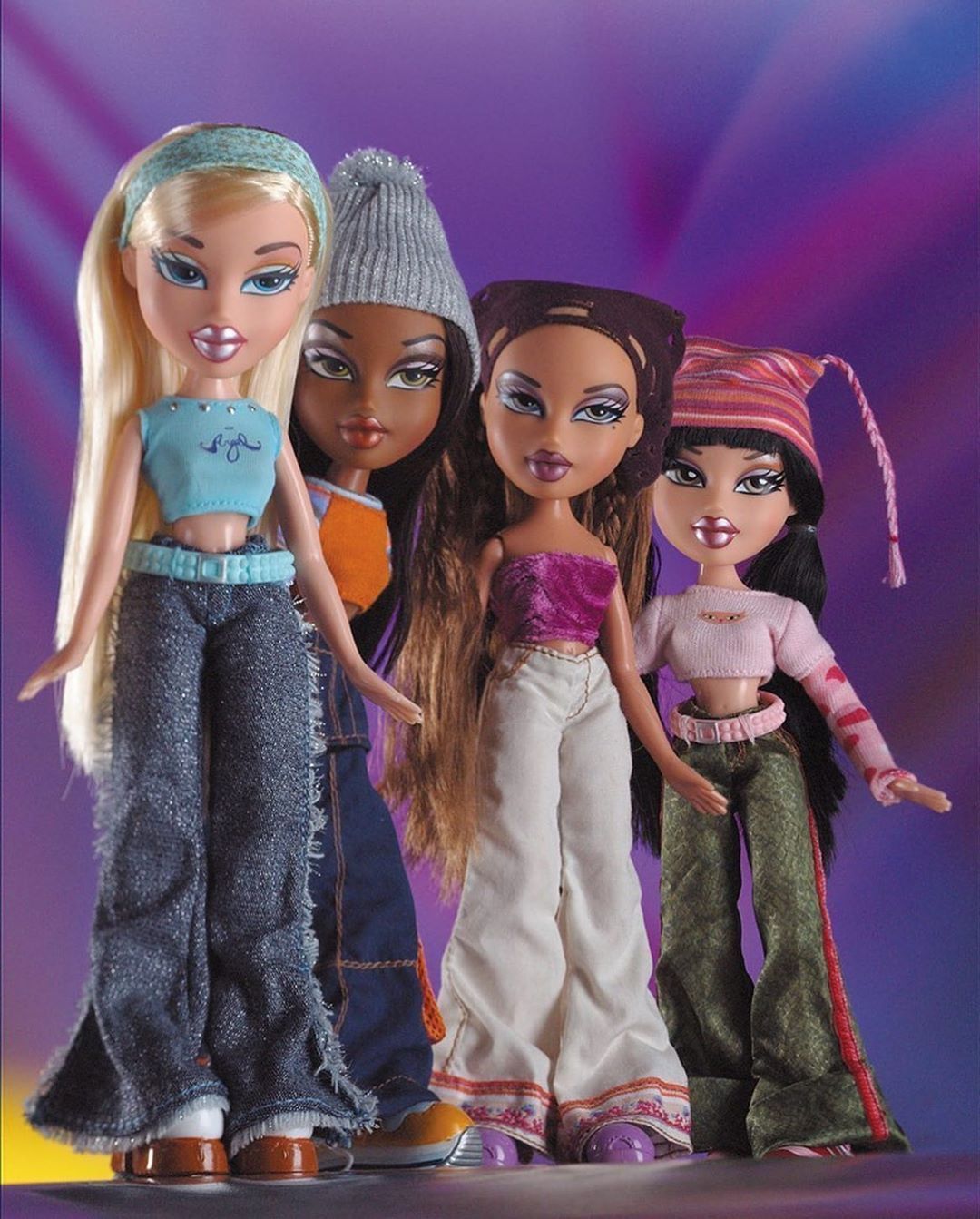
They wore frosted eyeshadow and lip gloss and came with crop tops and chunky platform boots. Compared to Bratz, Barbie seemed behind the times and boring — they had been using the same strategies since the eighties. Mattel needed to revitalize the Barbie brand and begin marketing to the new generation that was growing up in the early 2000s. While Bratz’s strategy was focused on the fashion and makeup trends of the time, Barbie took a different approach.
The 00’s: Barbie Debuts On The Silver Screen (2001)
In 2001, Barbie released a straight-to-VHS and DVD computer-animated movie, Barbie in the Nutcracker (2001; Owen Hurley), which was based on the classic story of the Nutcracker. (( Hurley, Owen, director. Barbie in the Nutcracker. Mainframe Entertainment, 2001. )) Mattel chose to appeal to the growing number of kids interested in media, rather than physical dolls.
And it paid off.
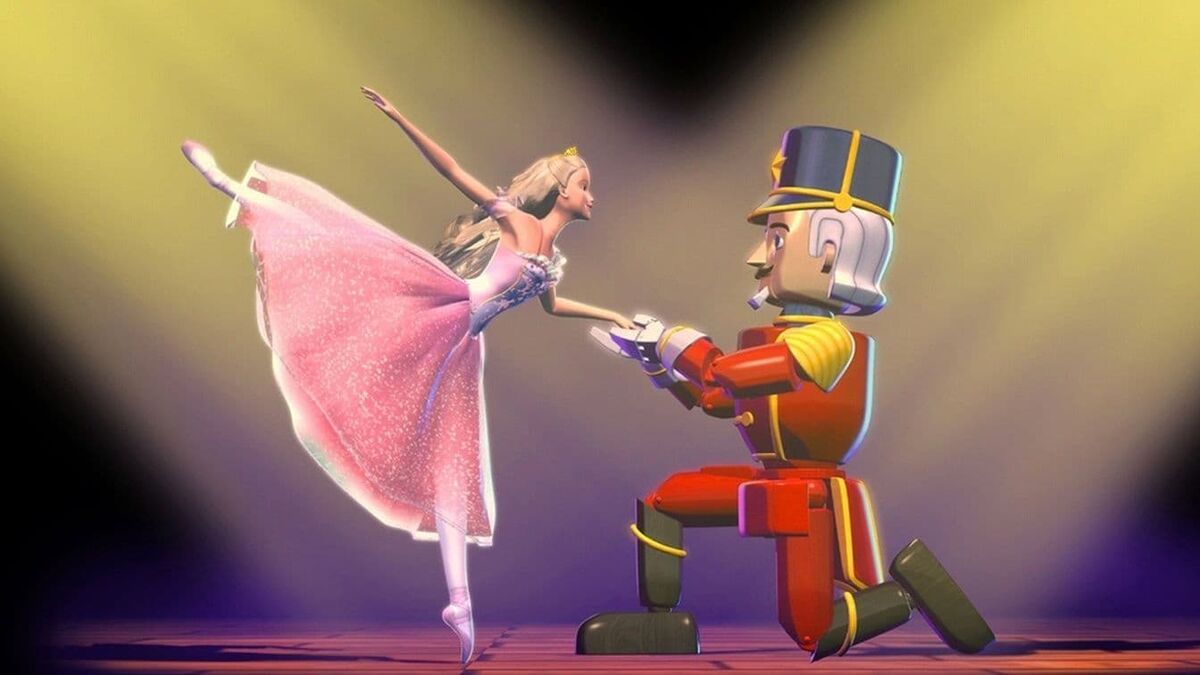
Barbie in the Nutcracker was an extremely successful debut film, grossing over $150 million dollars in total sales, part of which was from the corresponding merch that went with the movie. (( “Barbie in the Nutcracker.” Wikipedia, 2023. Accessed 23 June 2023. )) The smart thing about the Barbie movies was that the movies and the dolls based on characters from them had a mutually beneficial, symbiotic relationship. Kids who liked the movies would buy the dolls, and kids who bought the dolls would watch the movies.
This movie was a part of the first “type” of Barbie movie, which featured Barbie “in” or “as” already established properties or stories, such as Barbie as Rapunzel (2002; Owen Hurley) (( Hurley, Owen, director. Barbie as Rapunzel. Mainframe Entertainment, 2002. )) and Barbie in a Christmas Carol (2008; William Lau). (( Lau, William, director. Barbie in a Christmas Carol. Mainframe Entertainment, 2008. )) In these movies, it is well established that Barbie is an actor, rather than actually the main character; hence the “as.”
Most of these movies are framed by having Barbie tell a story to one of her little sisters. This story then ends up being the majority of the movie, with Barbie acting as the main character.
Barbie: Fairytopia (Walter Martishius, William Lau; 2005)
In 2005, Mattel released the first Barbie movie with an original story, which was Barbie: Fairytopia (2005; Walter Martishius, William Lau). (( Martishius, Walter and William Lau, directors. Barbie: Fairytopia. Mainframe Entertainment, 2005. )) Fairytopia, and the rest of the Barbie movies like it, still featured Barbie playing a role as an actor, but it wasn’t explicitly established like it was in the other type of Barbie movie.
The fact that Barbie was an actor was more like a well-understood fact among fans, or something you would pick up on after seeing the animated bloopers at the end of the Barbie movies. Fairytopia (2005) was the first of a five-movie-long Fairytopia franchise, which allowed tons of different characters to not only become well-known but have their doll counterparts sell well too.
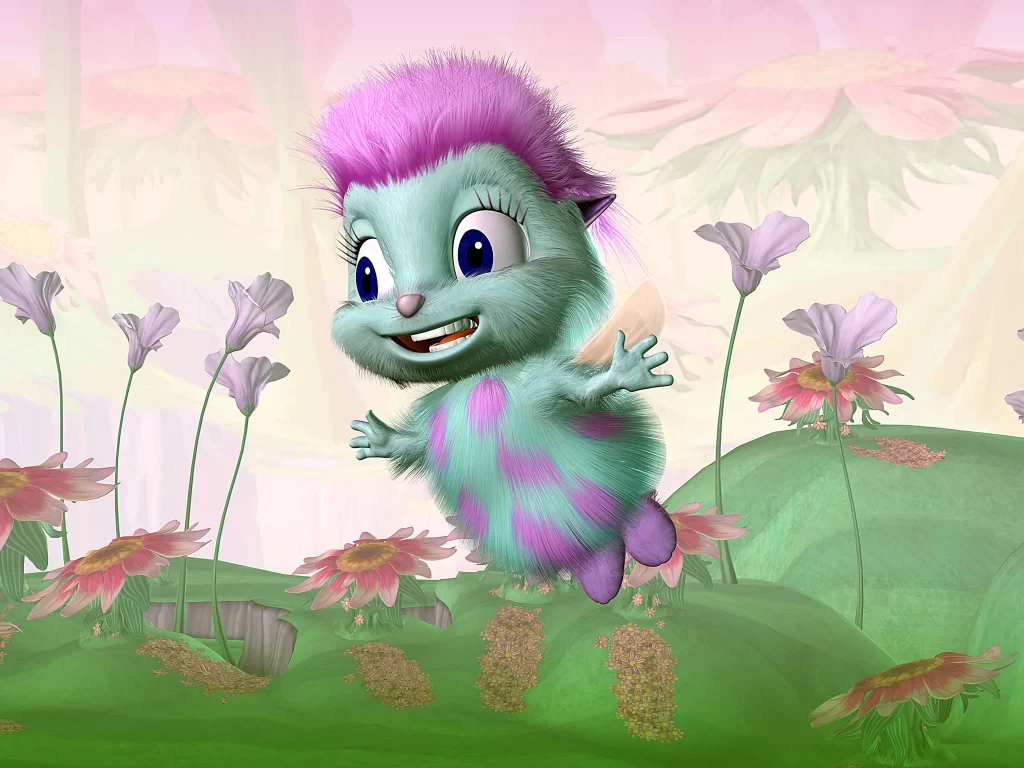
One character featured in all five movies was Bibble, who was Elina’s (the character Barbie played in the Fairytopia movies) lovable, furry sidekick. Bibble arguably left the franchise more popular than Elina herself, as sidekicks often do, and was very easily marketable to sell as a stuffed animal plush toy. Even people who aren’t very familiar with the Barbie movies might recognize the character of Bibble, as the Fairytopia franchise was one of the most iconic and well-known.
It was clear that Mattel had realized that the most popular subjects among young girls at the time were princesses and mythical creatures such as fairies and mermaids. In the coming years, they released many more mermaid and princess movies, most notably Barbie in the 12 Dancing Princesses (2008; Greg Richardson) (( Richardson, Greg, director. Barbie in the 12 Dancing Princesses. Mattel Entertainment, 2008)), Barbie and the Diamond Castle (2008; Gino Nichele) (( Nichele, Gino, director. Barbie and the Diamond Castle. Mattel Entertainment, 2008. )), and both Barbie in a Mermaid Tale (2010; Adam L. Wood) (( Wood, Adam, director. Barbie in a Mermaid Tale. Mattel Entertainment, 2010. )) movies.
What To Expect From A Barbie Movie
Since there are a total of forty-two Barbie movies, it would be pretty difficult to watch all of them before the release of the Barbie (2023) movie. But here is a quick primer on some of the common themes. One of the most common features of the Barbie movies is magic jewelry (most often necklaces) or otherwise magical objects in general.
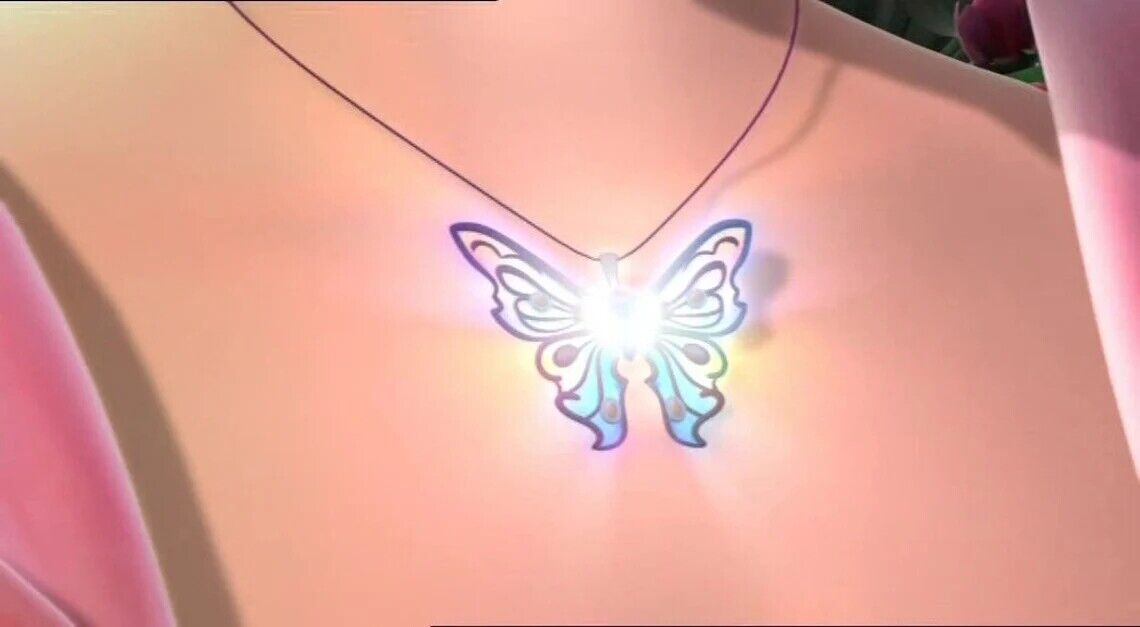
The first of these appears in the second Barbie movie, Barbie as Rapunzel (2002), which is a magical paintbrush that Barbie can use to paint portals to other places and new dresses. The first use of the magical jewelry motif comes in Fairytopia (2005), in which the necklace has many different powers and is practically the centerpiece of the movie’s conflict.
Many other movies have a magical jewelry element, such as the magic bracelet in The Barbie Diaries (2006; Eric Fogel) (( Fogel, Eric, director. The Barbie Diaries. Curious Pictures, 2006.)), the magic seashell necklace in Barbie in a Mermaid Tale (2010), the magic crown in Barbie: Princess Charm School (2011, Zeke Norton) (( Norton, Zeke, director. Barbie: Princess Charm School. Rainmaker Entertainment, 2011. )), and many more.
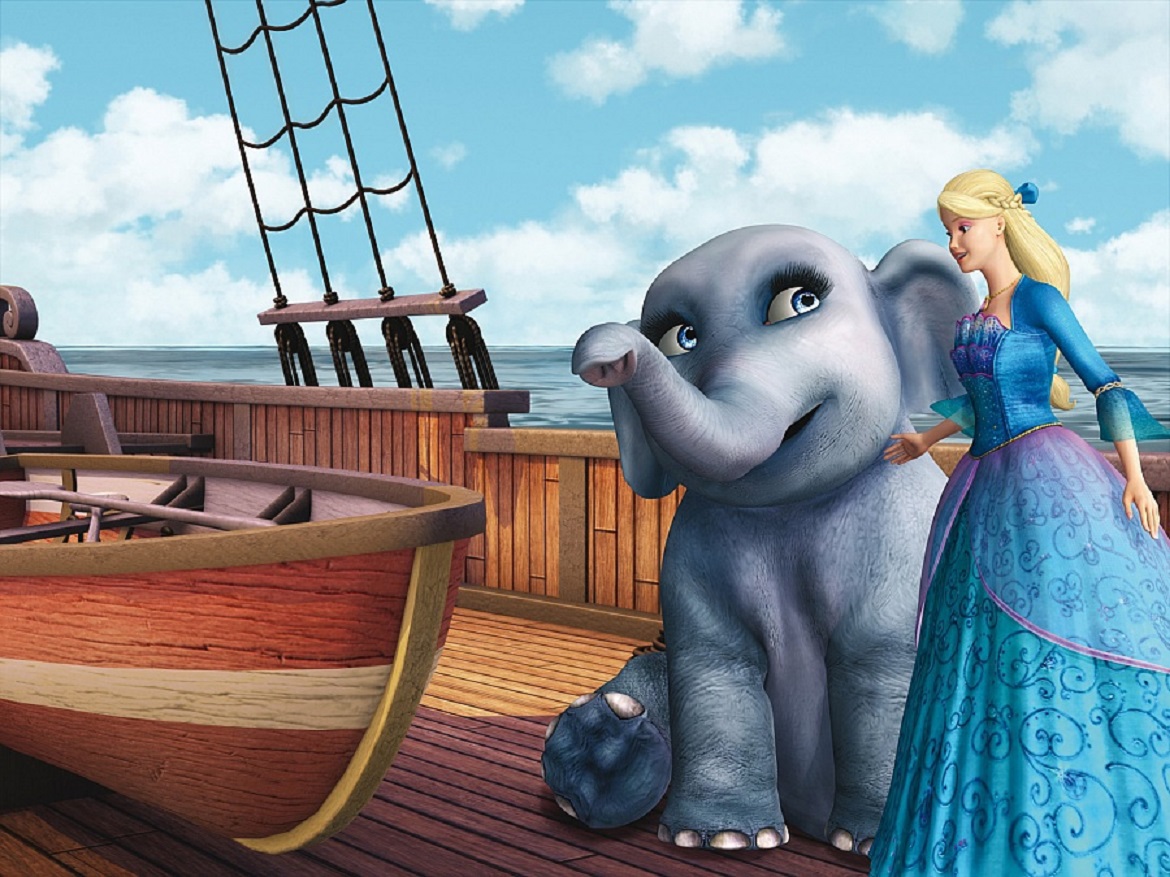
Another common feature is that Barbie and her friends will have pet sidekicks, like Bibble in Fairytopia (2005). Most of the time they are puppies or kittens, but every so often the pet will be another cute animal, like an elephant or a dolphin. For some reason, a common feature of Barbie movies is that they often include some type of whirlpool or otherwise magical body of water. A whirlpool is how the characters defeat the villain in Barbie and the Diamond Castle (2008), and whirlpools appear in almost every single Barbie movie about mermaids.
Whenever you watch a Barbie movie, you can expect to see at least one pet sidekick, one magical object, one evil queen as the villain, one fairy or mermaid, and if you’re lucky, a magical body of water.
The Appeal Of Barbie Movies
What exactly made Barbie movies so popular? It can be said that the major appeal of these movies was seeing the dolls you played with all the time on the screen, and vice versa. You could act out and relive the movies hundreds of times with dolls and playsets that looked exactly like the ones on the TV.
Similar to how Disney dolls or Winnie the Pooh plushes are so popular — kids love to play with things they are familiar with. Not only that, but nostalgia also sells extremely well. Adults who have long passed the targeted demographic for Barbie movies still watch them, hence the fact that people of all ages are excited about the Barbie (2023) movie.
Barbie Expands Into Other Forms Of Media
Aside from their movies, Barbie also expanded into other forms of media, continuing to adapt to the rapidly changing times. In 2010, both Barbie and Ken appeared as main characters in Toy Story 3 (Lee Unkrich) (( Unkrich, Lee, director. Toy Story 3. Walt Disney Pictures, 2010. )), played by Jodi Benson and Michael Keaton respectively.
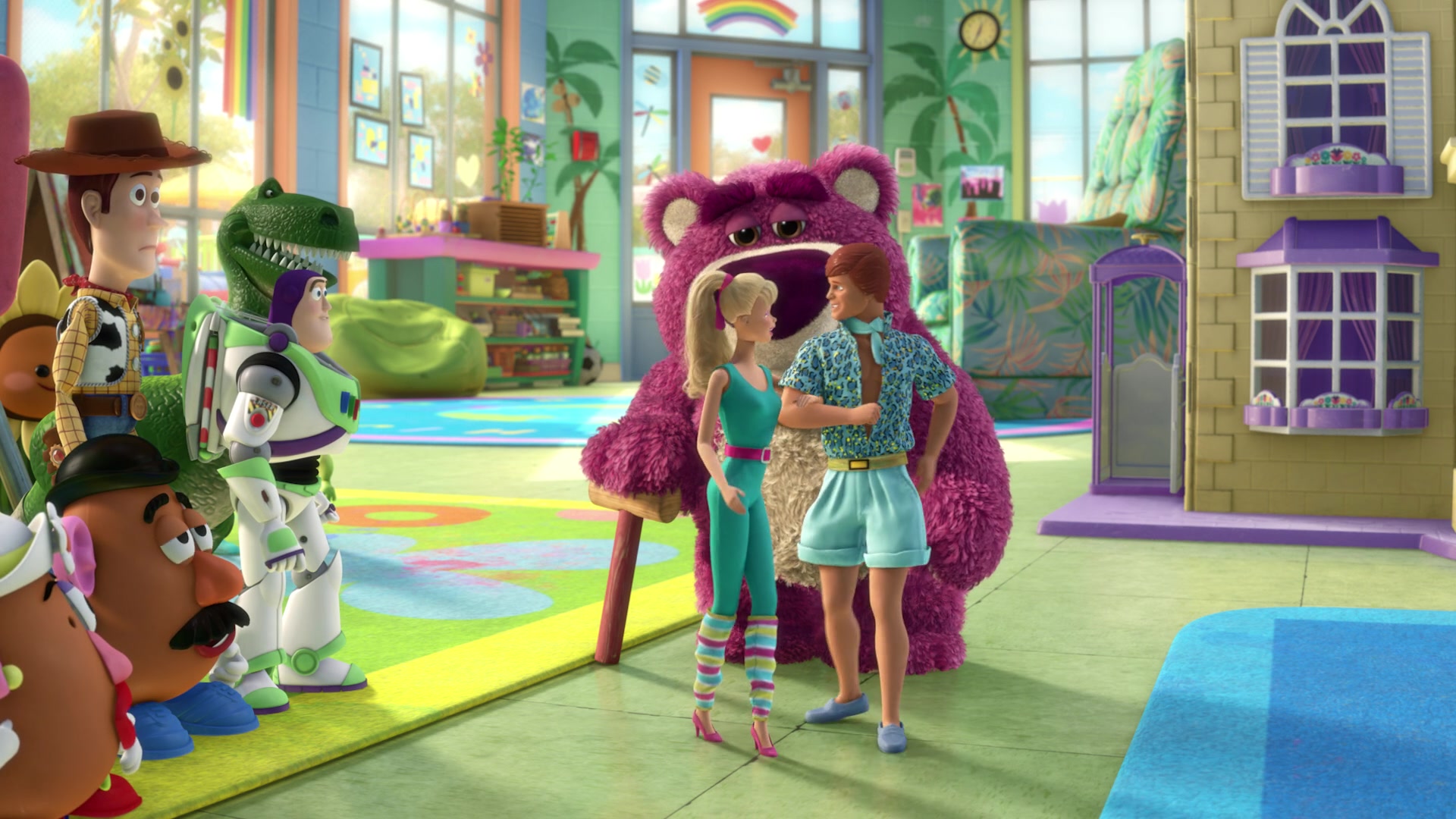
While the Barbie straight-to-DVD movies were well-known among young girls, the number of people they reached was nowhere near the number Pixar was pulling in. The Toy Story 3 movie was another huge step for Barbie.
“Barbie Online”
Mattel had been releasing video games since the eighties, but their Barbie games really started to take off with the emergence of online games in the early 2000s. Barbie expanding to the internet in the 2000s was just another way Mattel diversified its audience and attempted to appeal to newer generations of kids. There were and still are thousands of different online Barbie games, consisting of everything from decorating dream houses to styling Barbie’s hair.
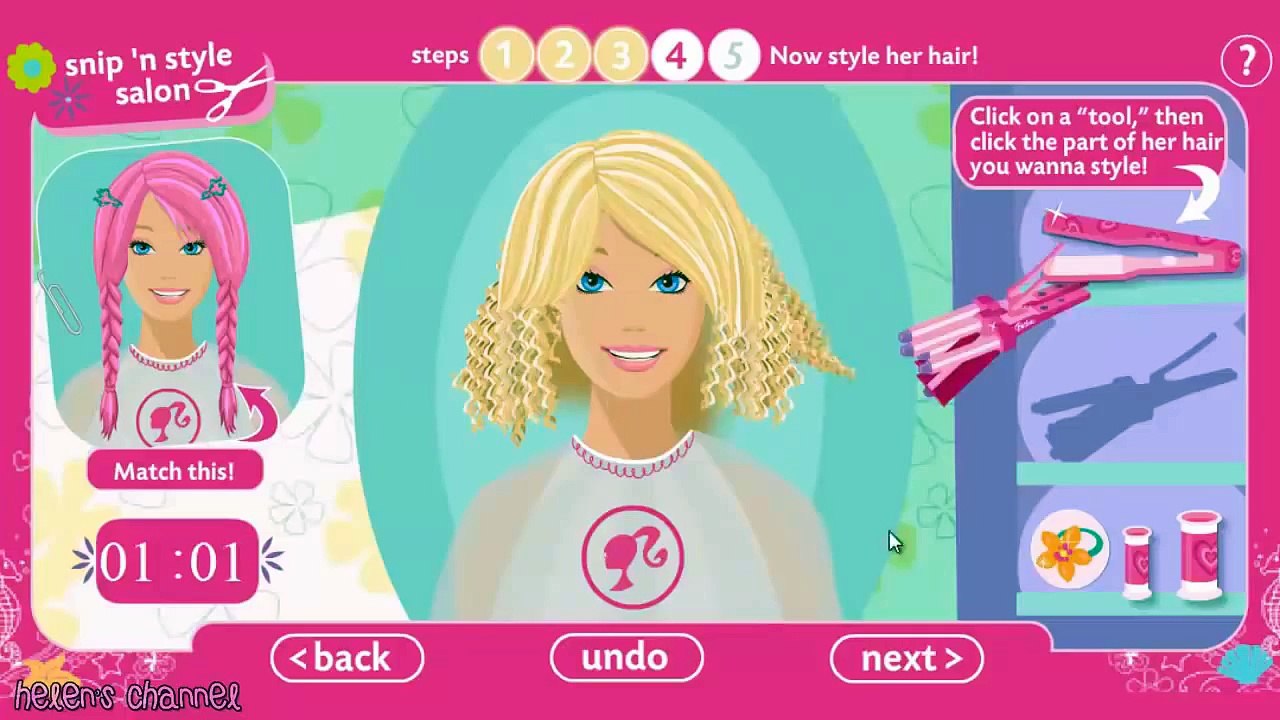
In order to connect with younger kids even more, Mattel began releasing Barbie TV shows and web series on YouTube. These series are what current kids prefer to the Barbie movies, as people are just watching more content on the internet nowadays. Barbie: Life in the Dreamhouse (2012-2015) (( Wiebe, David, creator. Barbie: Life in the Dreamhouse. Arc Productions, 2012. )) was the first of these, originally being released on YouTube, but now also available on Netflix. Barbie: Life in the Dreamhouse ran for three years and was extremely successful, getting over one billion views in total. (( “Entertainment.” Barbie Media, 2022. Accessed 23 June 2023. ))
The show was animated but followed a reality TV format, featuring confessionals from Barbie, Ken, and her friends. It included a lot of meta-commentary satirical jokes about Barbie as a whole, making the show enjoyable for adult fans of Barbie in addition to kids. In one episode, Barbie’s sister Stacy attempts to make a fire and then gives up and asks “how am I supposed to make a fire with plastic sticks?” (( “Oh How Campy, Too.” Barbie: Life in the Dreamhouse, season 3, episode 7, Mattel, 20 Mar. 2013. YouTube. ))
This sort of meta-commentary and self-parody is what the new Barbie (2023) seems to be going for. The trailers that have been released so far have a lot of this sort of comedy, and the inclusion of multiple different kinds of Barbies existing together suggests that they will address that Barbie herself is a doll. Especially after seeing how well this worked for Life in the Dreamhouse, this type of comedy will be great for the new movie.
After Life in the Dreamhouse ended, Mattel continued to release other Barbie TV series, including Barbie: Dreamtopia (2016-2021) (( Pistor, Julia, creator. Barbie: Dreamtopia. Mattel Television, 2016. )), Barbie: It Takes Two (2022- ) (( Griffin, Marsha, creator. Barbie: It Takes Two. Mainframe Studios, 2022. )), and Barbie Vlogs (2015- ) (( Pistor, Julia, creator. Barbie Vlogs. Mattel Creations, 2015. )), which is still ongoing currently.
The Barbie Vlogs are basically animated YouTube videos you might see from an independent vlogger on the platform. Barbie herself will sit down in front of the camera and film videos like challenges, routines, and tours.
What Sets Barbie Apart?
In the end, Barbie managed to evade the threat of Bratz dolls by expanding its brand to movies, games, series, and more. Bratz actually made multiple attempts to emulate the success Barbie had seen from their media ventures, with multiple animated movies and games, as well as a live-action film in 2007. (( “Bratz Movies.” IMDb, 2020. Accessed 24 Jun 2004. )) But ultimately, Barbie came out on top. Bratz dolls turned out to just be a trend of the early 2000s, and are no longer really popular. This is likely because of just how trendy for the 2000s they were; it was hard to transfer that success onto the next generation of kids.
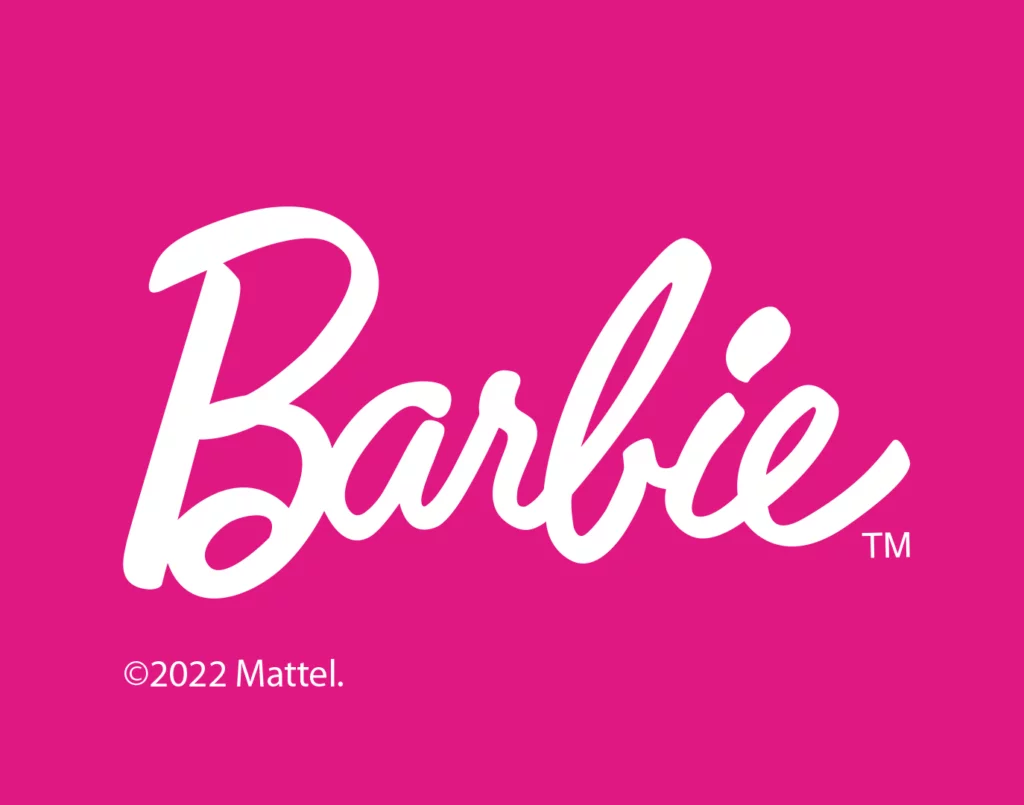
However, this was not only seen with just Bratz. Barbie also managed to continuously edge out other doll and toy companies. Cabbage Patch Kids, Beanie Babies, American Girl dolls, and more were all similar toy companies that became extremely popular, but none were able to foster the long-lasting success that Barbie has managed.
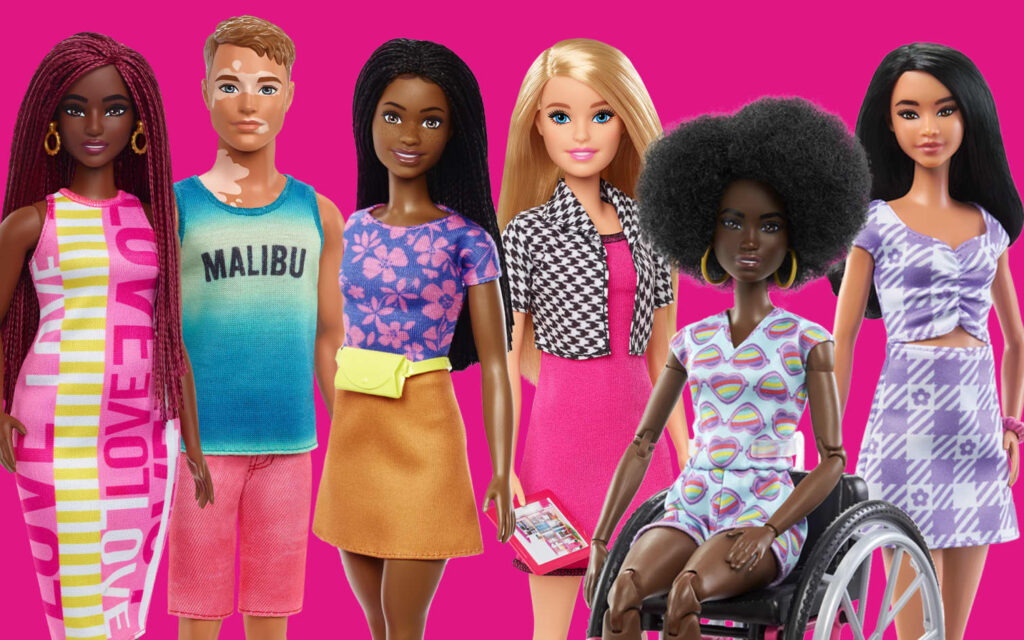
It seems like the main thing that sets Barbie apart is its extremely strong sense of branding that is unlike any other doll company. Just like how Tiffany & Co owns that particular shade of mint blue, Barbie actually owns a particular color of pink (Pantone 219 C). (( “Barbie Pink.” Trademark Encylopedia, 2023. Accessed 23 June 2023. )) This color pink is trademarked in tons of different categories, making it essentially exclusive to Barbie only. This move really solidifies Barbie’s branding, not to mention the particular Barbie font that is used on everything, as well as Barbie herself.
No other doll company has one singular character which is the face of the entire brand. When you think of Bratz or American Girl, you might think of your favorite doll that you grew up having. But when you think of Barbie, you just think of Barbie herself, and that is an extremely powerful thing for a brand to have. In addition to its strong branding, they have also continued to prove they know how to adapt to the times. They’ve rectified the diversity issues that plagued the brand in its early days, now releasing dolls of all kinds.
They’ve improved and expanded upon their messages of feminism and female empowerment. They have used their longevity as a brand to continue to market to older audiences through nostalgia. And most notably, they’ve expanded into essentially every form of media and product under the sun. They first began this with straight-to-DVD movies, but have since released so much more, making the brand extremely versatile and recognizable.
Barbie (2023)
Today, Barbie is popular among people of all ages because she has been around for so long. That’s what makes the Barbie (2023) movie possible. Kids will want to see it because it has Barbie in it, but adults and teenagers will too because Barbie is such a familiar and nostalgic figure for them.
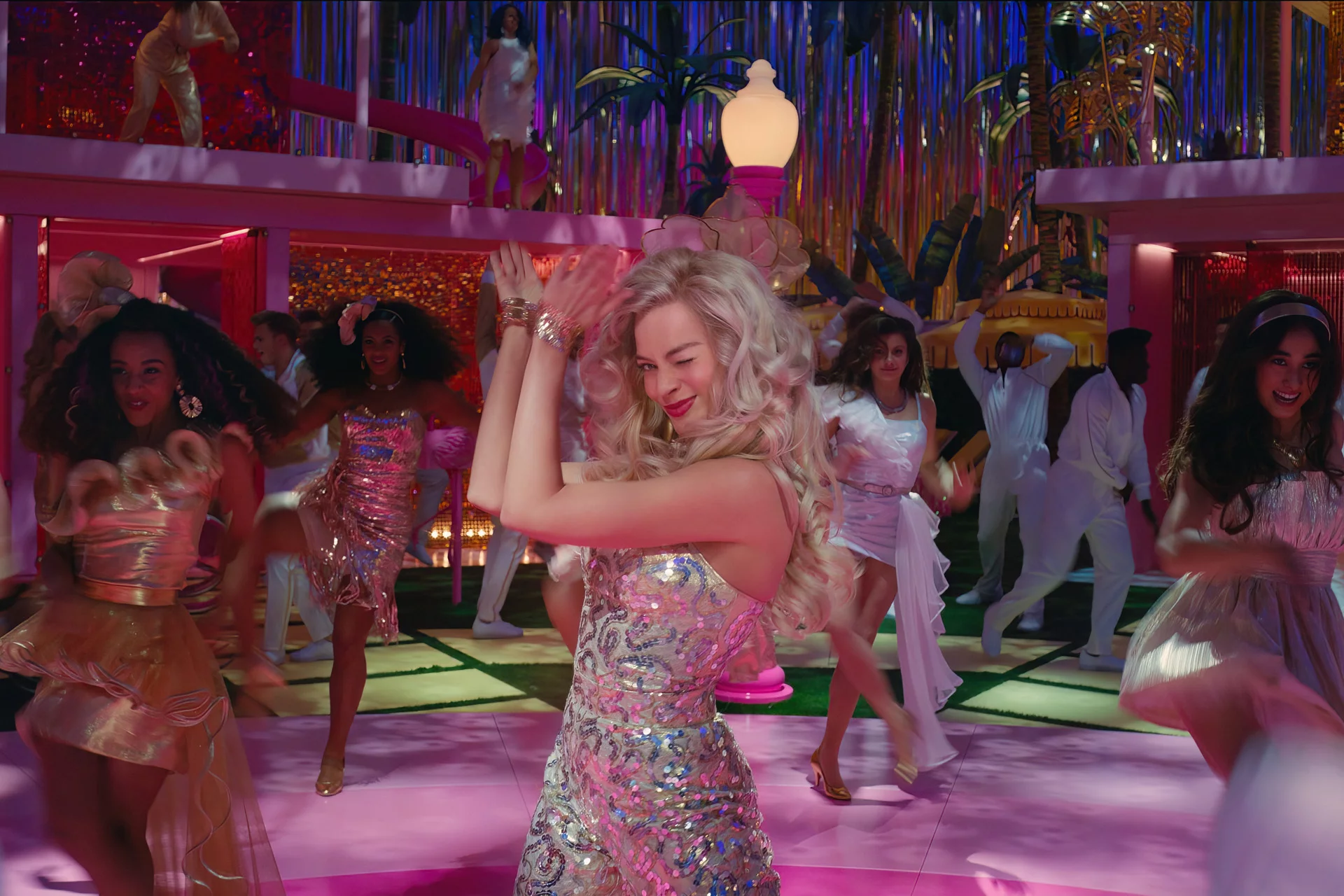
On top of that, the movie has a star-studded cast, an extremely high production value, and a marketing team that seems to have enough money to build and rent out a real Barbie Dreamhouse in Malibu. (( “Barbie’s Malibu DreamHouse is back on Airbnb – but this time, Ken’s hosting.” Airbnb, 2023. Accessed 27 June 2023. )) In combination with the huge built-in audience, Barbie’s strong branding and already well-established character, and all these things that make movies great, it seems like the film will be a major success.
The Future Of Barbara Millicent Roberts
If the Barbie (2023) movie does well, it is safe to say that Barbie will have yet another huge resurgence, similar to its 1992 boom with the Totally Hair Barbie and its 2001 boom with the Barbie in the Nutcracker movie.
And if Barbie has managed to stay in the minds of the masses for over sixty years, continuing to come up with ways to appeal to new kids and the rapidly changing toy market, there is no telling how long she will be popular. Barbara Millicent Roberts’ future, in short, looks extremely bright.
